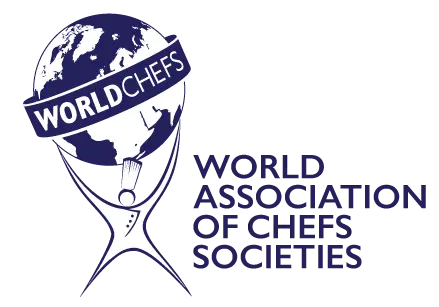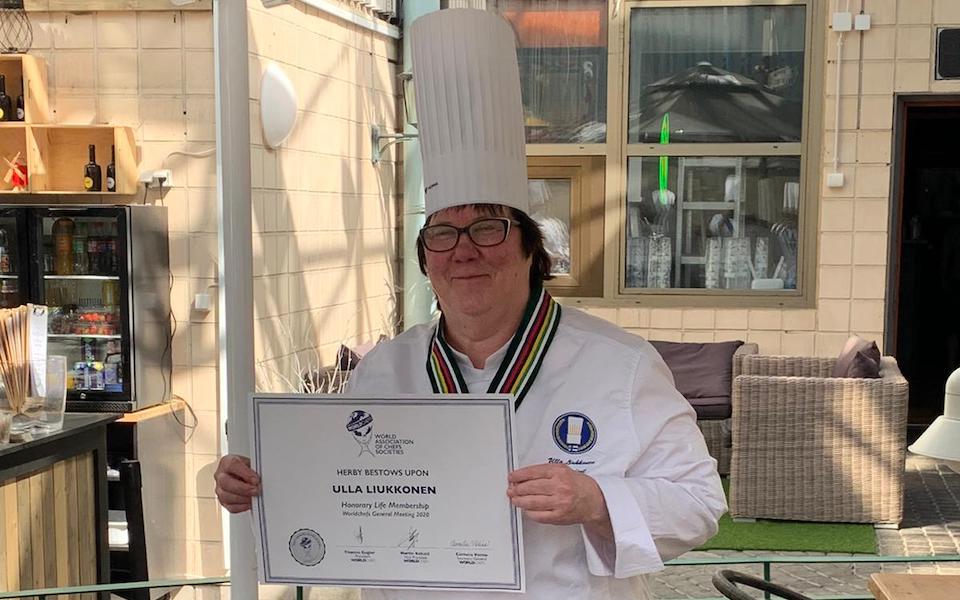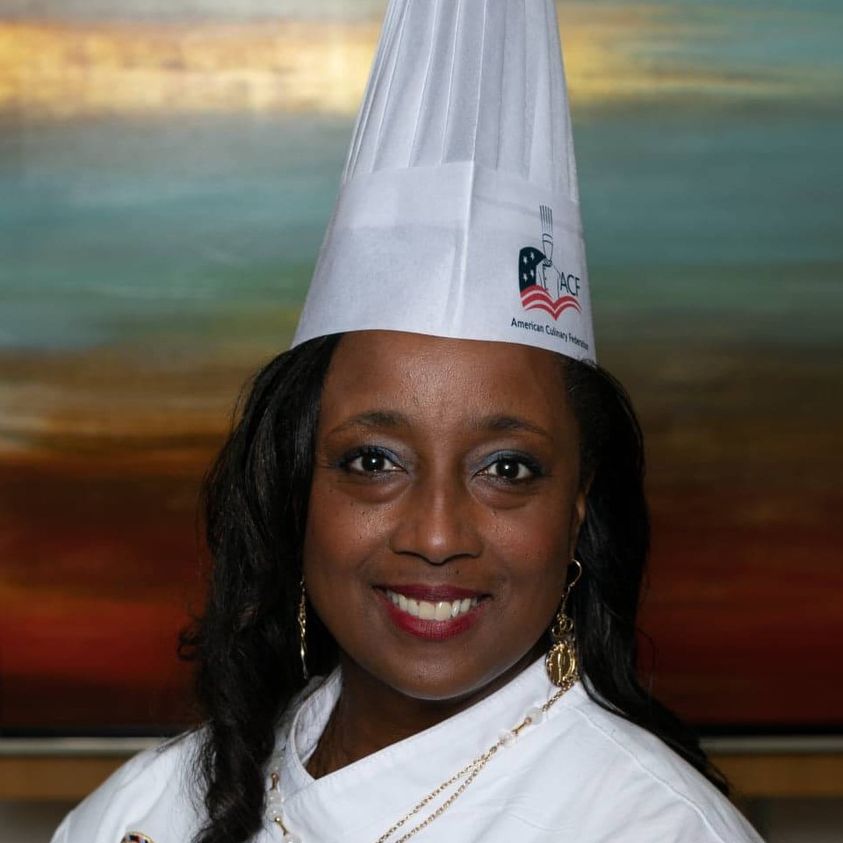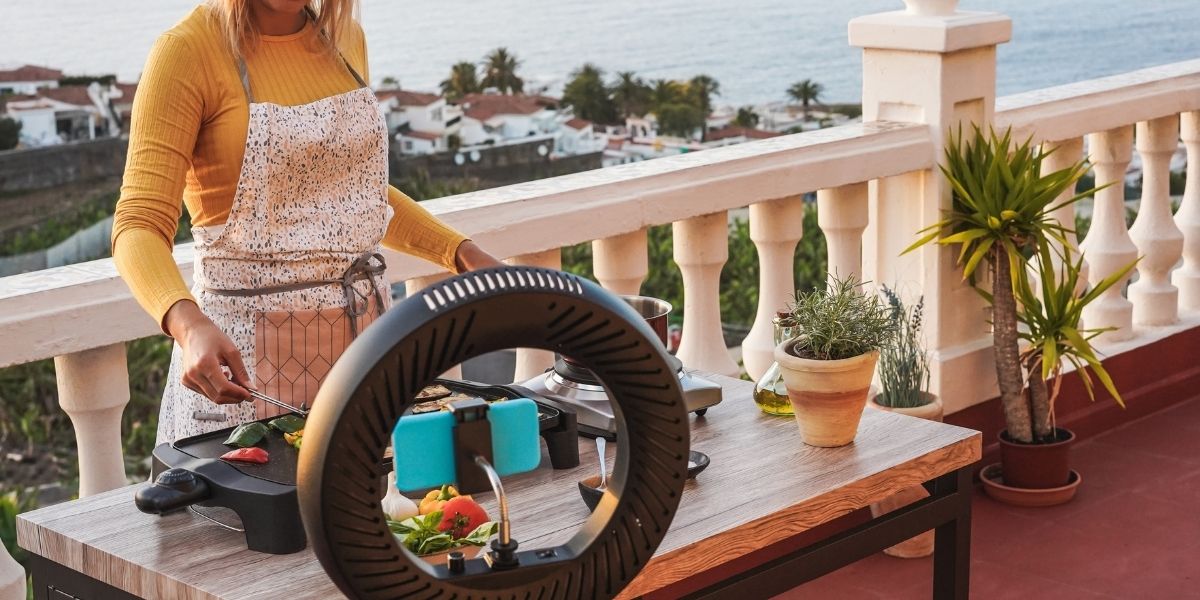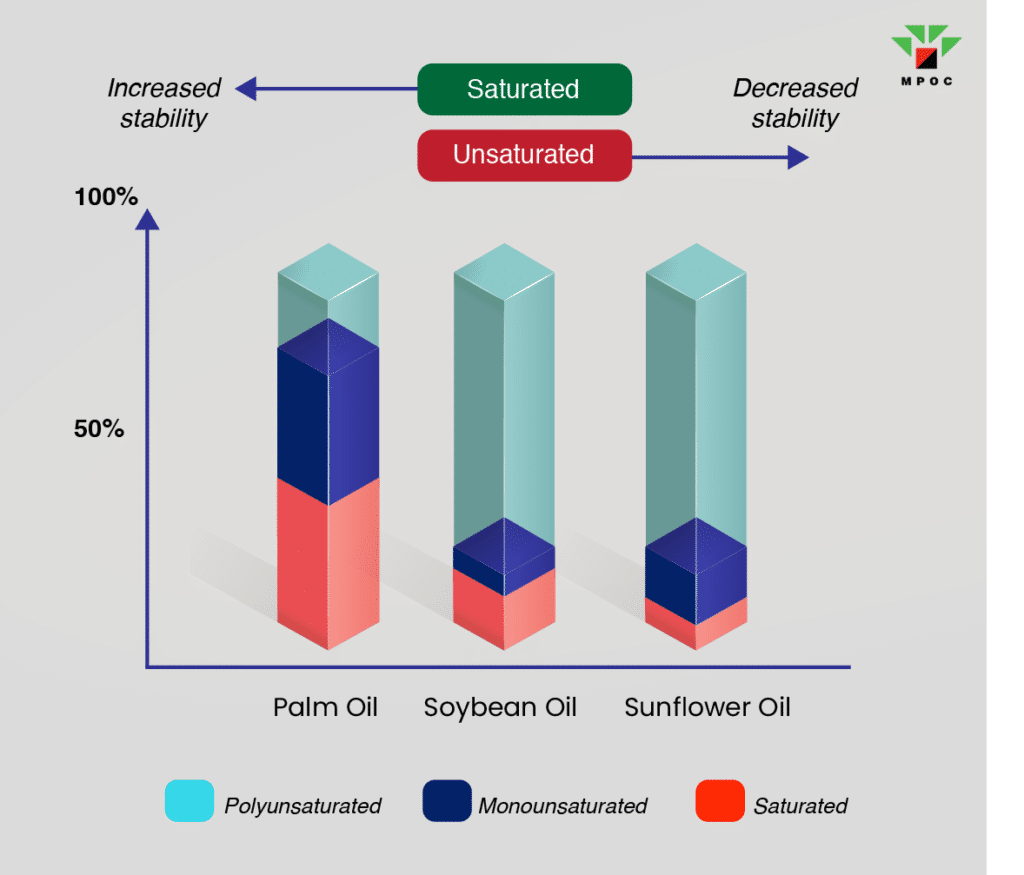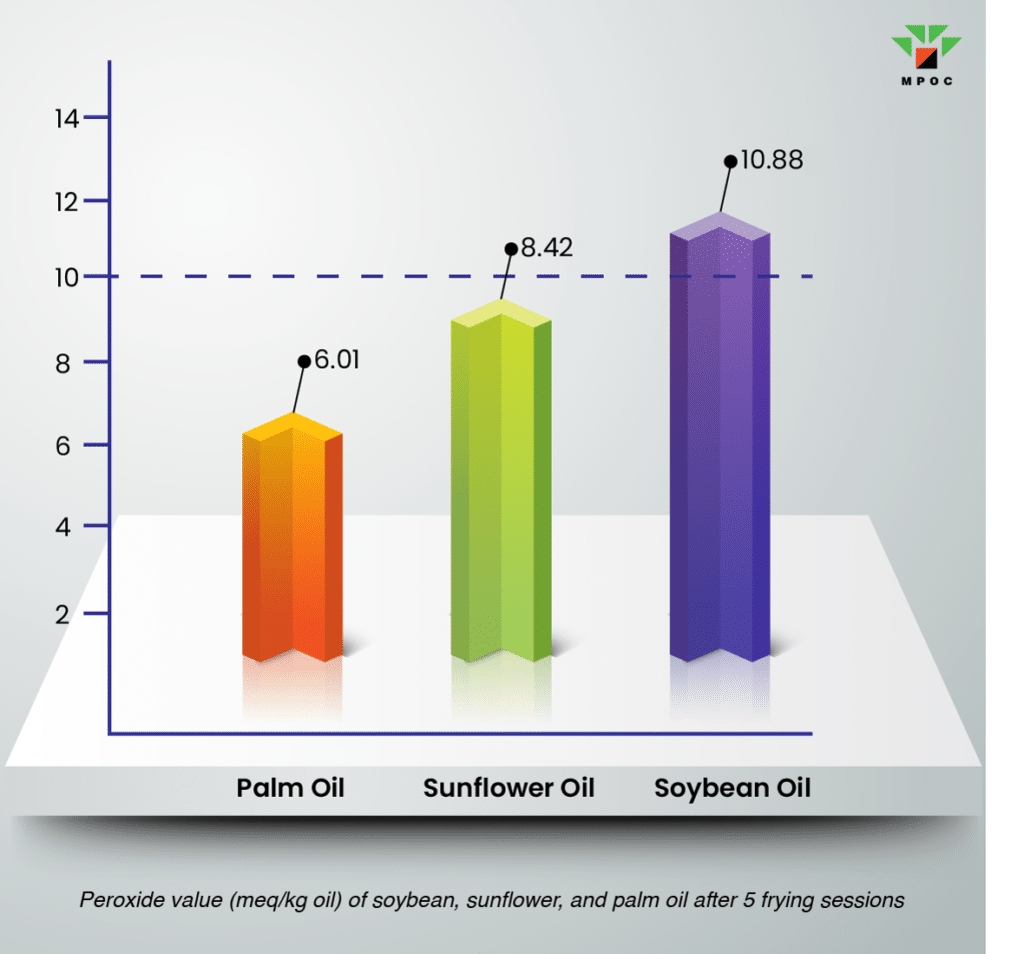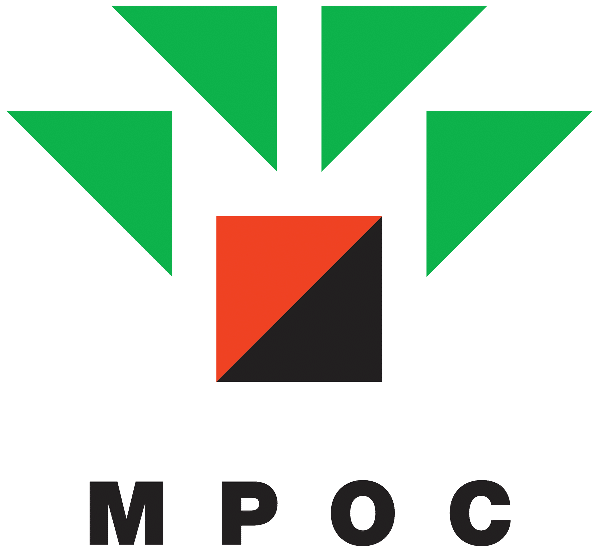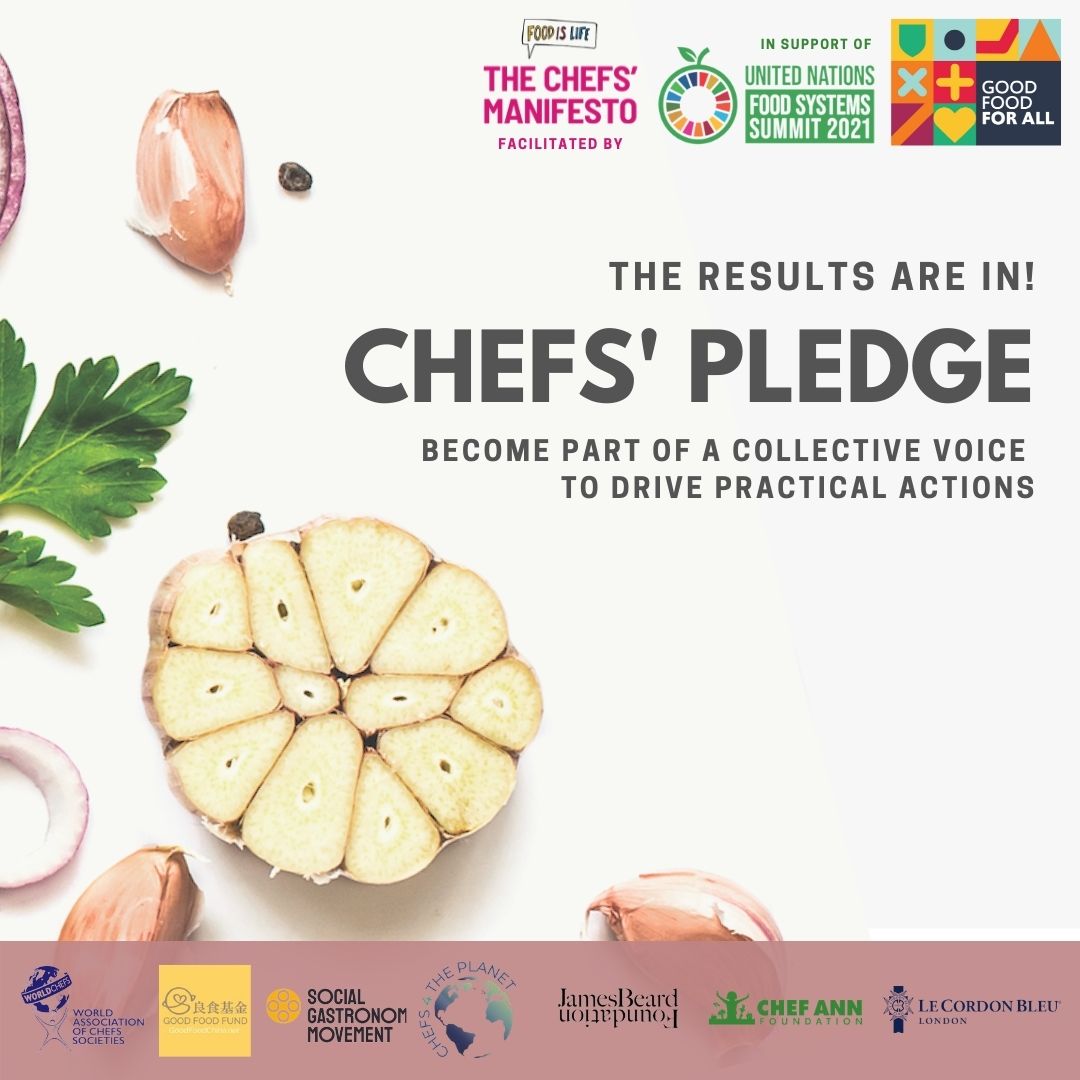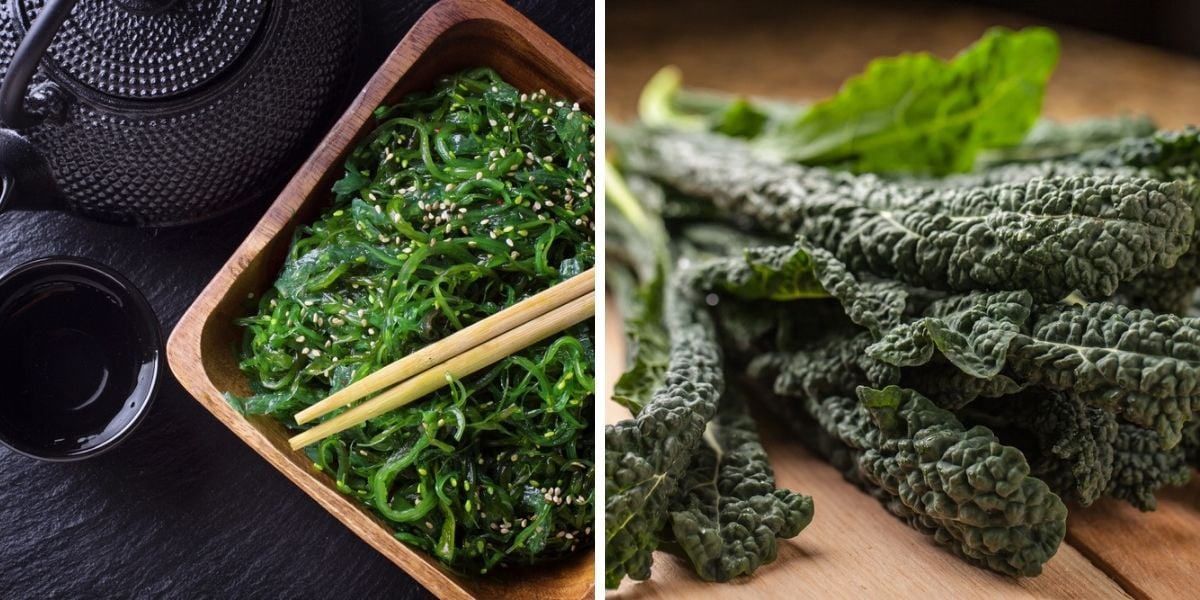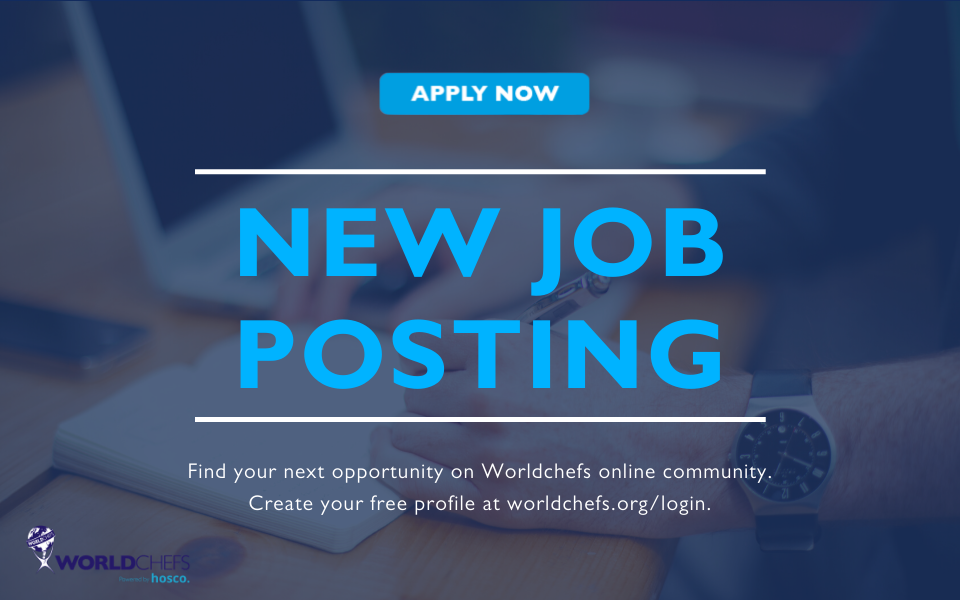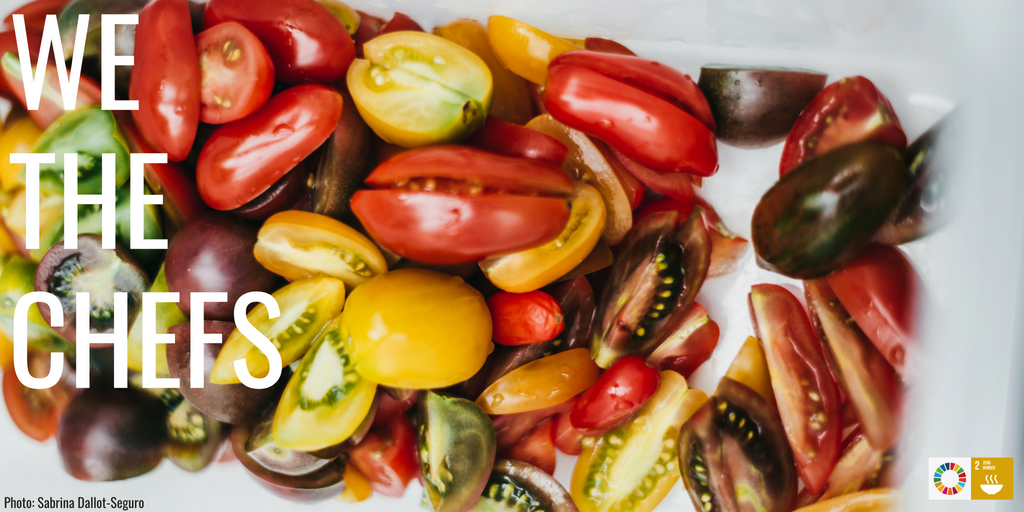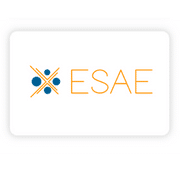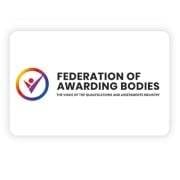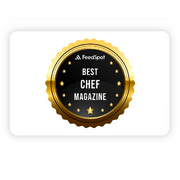Chef Ulla Liukkonen was invited to become an honorary member of the World Association of Chefs’ Societies – the award was handed over on June 9, 2021 in Lahti
Ulla Liukkonen, President of the Finnish Chefs’ Association, has been awarded an honorary membership in the World Association of Chefs Societies (Worldchefs). Liukkonen has been the chairman of the Finnish Chefs since 2008. Lifetime Honorary Membership of Worldchefs is the highest recognition a chef can receive from his colleagues.
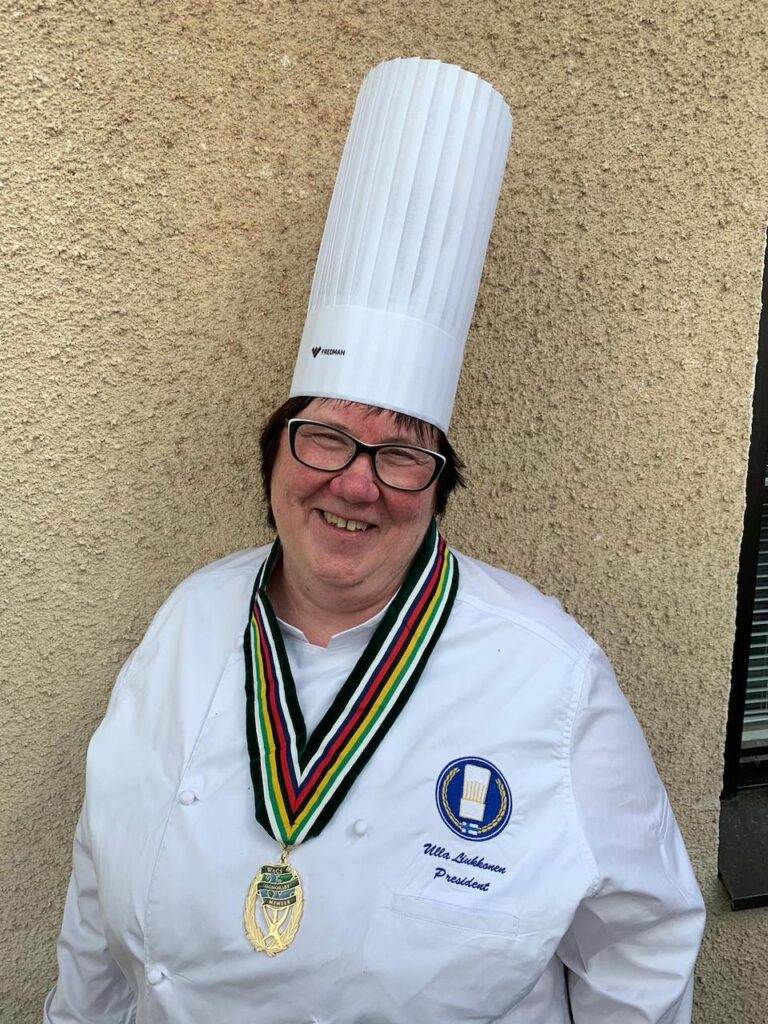
PHOTO: Riikka Mantila
– I am extremely grateful for the recognition I have received and I want to share it with our entire association. I warmly thank Wordchefs, the board of the Finnish Chefs Association, the member associations and all our members, as well as our supporters, for their cooperation over the years to promote Finnish food culture,” says Liukkonen.
– Recognition is granted on the basis of strict selection criteria, such as the member states’ support for the applicant and meritorious work for the country’s chefs’ association and Worldchefs, says Petri Selander, vice-president of the Finnish Chefs’ Association.
Osmo Norha (1974) and Martti Lehtinen (2006) have previously been invited from Finland to become honorary members of Worldchefs.
The recognition was announced at the Worldchef Congress on 15 August 2020, which was held as a remote congress instead of the Worldchefs Congress & Expo in St. Petersburg due to the corona situation.
Due to the situation, the harnesses were handed over to Liukkonen less than a year late. A solemn handover ceremony was held on June 9, 2021 in Lahti in connection with the board meeting of the Finnish Chefs’ Association. In addition to SKM’s board, representatives of the regional association Päijät-Hämeen Keittiömestarit ry congratulated them.
The Finnish Chefs Association congratulates Liuko on the recognition.

About Suomen Keittiömestarit (the Finnish Chefs’ Assocation)
The Finnish Chefs’ Association is a national association that acts as the central organization of regional chefs’ associations and as the guardian of the professional interests of its members, promotes professional skills and knowledge, and co-operates between communities, companies and individuals operating in the field. One of the main goals of the activity is to promote Finnish food culture and high-quality cooking skills. The association also supports competition activities in the field. The Finnish Chefs’ Association is a member association of the Nordic and world chef associations. Learn more at www.chefs.fi.
About Worldchefs
The World Association of Chefs’ Societies, known as Worldchefs, is a dynamic global network of 110 chef associations worldwide. A leading voice in the hospitality industry, Worldchefs carries 91 years of history since its founding at the Sorbonne by the venerable Auguste Escoffier. Representing a mobilized international membership of culinary professionals, Worldchefs is committed to advancing the profession and leveraging the influence of the chef jacket for the betterment of the industry and humanity at large.
Worldchefs is dedicated to raising culinary standards and social awareness through these core focus areas:
Education – Worldchefs offers support for education and professional development through the landmark Worldchefs Academy online training program, a diverse network of Worldchefs Education Partners and curriculums, and the world’s first Global Hospitality Certification recognizing on-the-job skills in hospitality;
Networking – Worldchefs connects culinary professionals around the world through their online community platform and provides a gateway for industry networking opportunities through endorsed events and the biennial Worldchefs Congress & Expo;
Competition – Worldchefs sets global standards for competition rules, provides Competition Seminars and assurance of Worldchefs Certified Judges, and operates the prestigious Global Chefs Challenge;
Humanitarianism & Sustainability – Worldchefs Feed the Planet and World Chefs Without Borders programs relieve food poverty, deliver crisis support, and promote sustainability across the globe.
For more information about Worldchefs, visit us at www.worldchefs.org.
Suomen Keittiömestarit ry:n puheenjohtaja, keittiömestari Ulla Liukkoselle on myönnetty maailman keittiömestariliiton The World Association of Chefs Societies -yhdistyksen (Worldchefs) kunniajäsenyys. Liukkonen on toiminut Suomen Keittiömestareiden puheenjohtajana vuodesta 2008 alkaen. Maailmanliiton elinikäinen kunniajäsenyys on korkein huomionosoitus, minkä keittiömestari voi saada kollegoiltaan.

– Olen äärettömän kiitollinen saamastani tunnustuksesta ja haluan jakaa sen koko yhdistyksemme kanssa. Kiitän lämpimästi Wordchefsia, Suomen Keittiömestarit ry:n hallitusta, jäsenyhdistyksiä ja kaikkia jäseniämme sekä tukijoitamme vuosien aikana tehdystä yhteistyöstä suomalaisen ruokakulttuurin edistämiseksi”, kiittää Liukkonen.
– Tunnustus myönnetään tiukkojen valintakriteerien pohjalta, joita ovat esimerkiksi jäsenmaiden tuki hakijalle sekä ansiokas toiminta oman maan keittiömestariliiton sekä Worldchefsien hyväksi, kertoo Suomen Keittiömestarit ry:n varapuheenjohtaja Petri Selander.
Suomesta maailmanliiton kunniajäseniksi on kutsuttu aiemmin Osmo Norha (1974) ja Martti Lehtinen (2006).
Tunnustus julkistettiin 15.8.2020 pidetyssä maailmanliiton kongressissa, joka järjestettiin koronatilanteen vuoksi etäkongressina Pietariin suunnitellun Worldchefs Congress & Expo -tilaisuuden sijasta.
Tilanteesta johtuen käädyt päästiin luovuttamaan Liukkoselle vajaan vuoden myöhässä. Juhlava luovutustilaisuus pidettiin 9.6.2021 Lahdessa Suomen Keittiömestarit ry:n hallituksen kokouksen yhteydessä. Paikalla onnittelemassa olivat SKM:n hallituksen lisäksi alueyhdistys Päijät-Hämeen Keittiömestarit ry:n edustajat.
Suomen Keittiömestarit ry onnittelee Liukkosta saadusta tunnustuksesta.

Suomen Keittiömestarit ry on valtakunnallinen yhdistys, joka toimii alueellisten keittiömestariyhdistysten keskusjärjestönä sekä jäsenistönsä ammatillisten etujen valvojana, ammattitaidon ja -tiedon edistäjänä sekä tekee yhteistyötä alalla toimivien yhteisöjen, yritysten ja yksityisten kesken. Yksi toiminnan keskeisimmistä tavoitteista on edistää suomalaista ruokakulttuuria ja korkealaatuista keittotaitoa. Yhdistys tukee lisäksi alan kilpailutoimintaa. Suomen Keittiömestarit ry on Pohjoismaiden ja maailman keittiömestariliittojen jäsenyhdistys.
www.chefs.fi
The World Association of Chefs Societies -yhdistyksen (Worldchefs) on keittiömestariyhdistysten maailmanlaajuinen verkosto, joka on perustettu 1928. Yhdistyksen jäseninä ovat yli 90 maan kansalliset keittiömestariliitot, jotka edustavat yhteensä yli 10 miljoonaa ammattilaista ympäri maailmaa.
www.wacs.org
